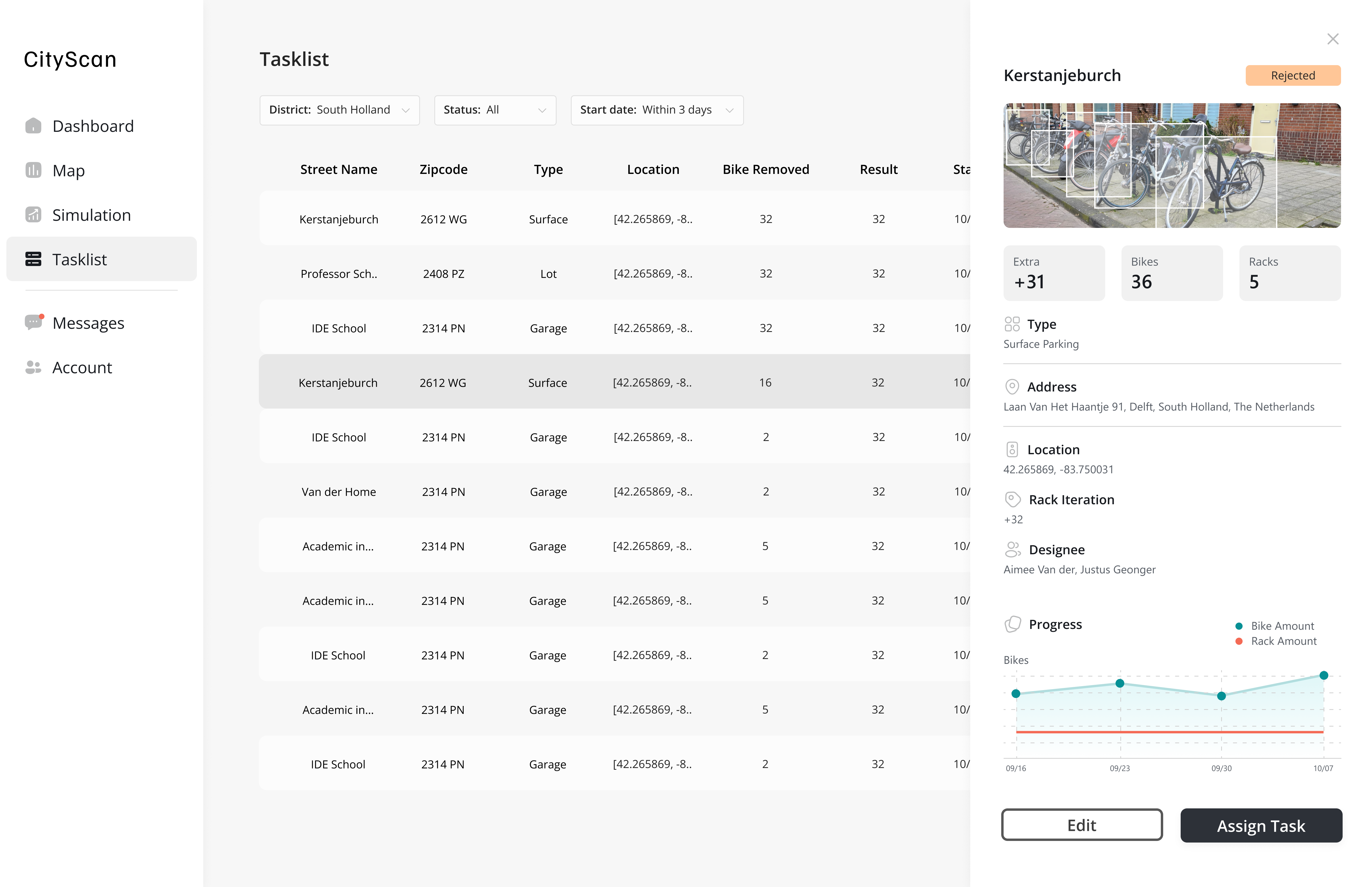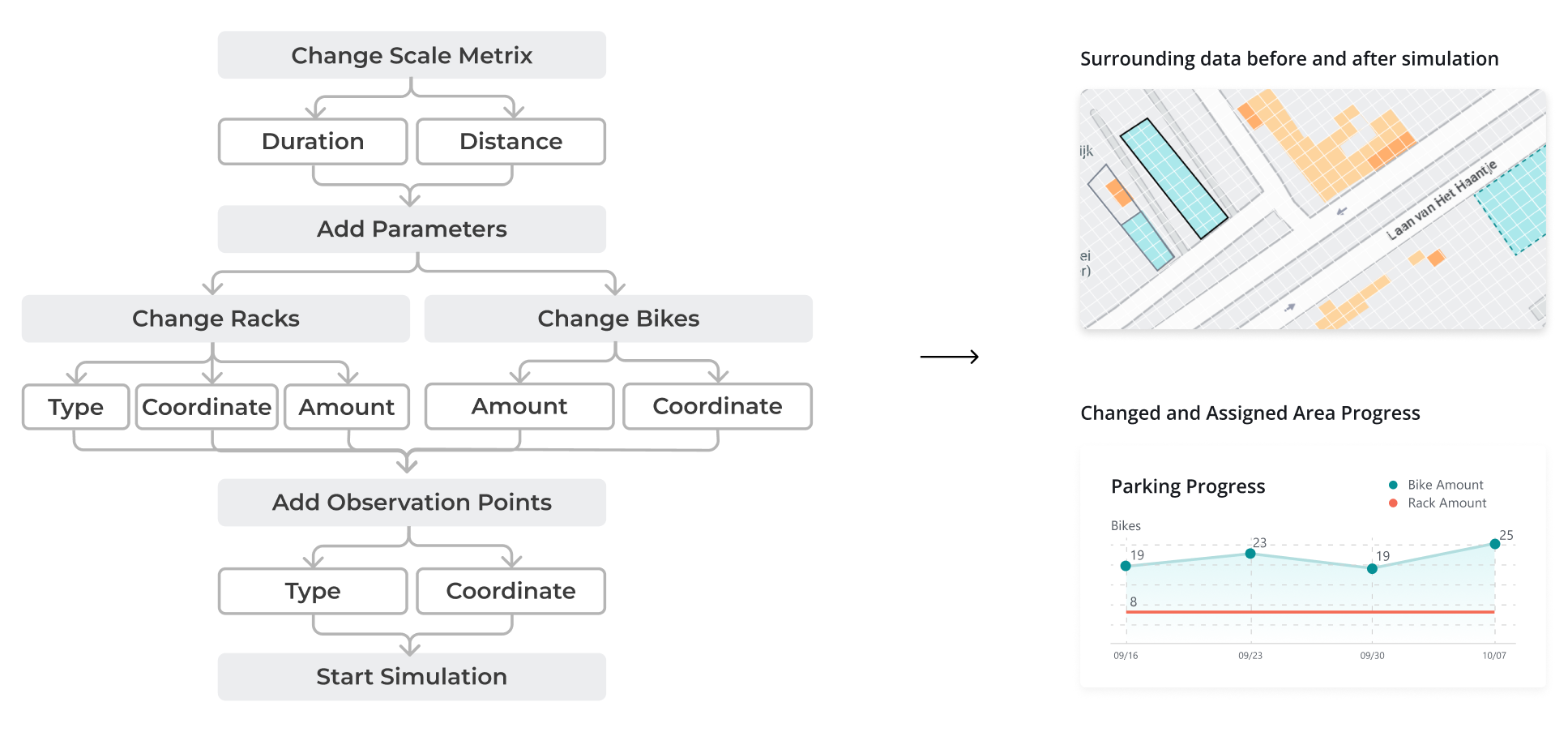STAKEHOLDER INTERVIEW
The Street Scanning Car will enable Municipality to monitor live data and process
Municipality: “The bike removal shows low efficiency and high randomness.”
Removal Worker: “We won't usually tow bikes that are fastened to poles or trees.”
Cycler: “It's a bet; most of the time, I won't get penalized for improper parking, so I don't bother with a bike rack.”
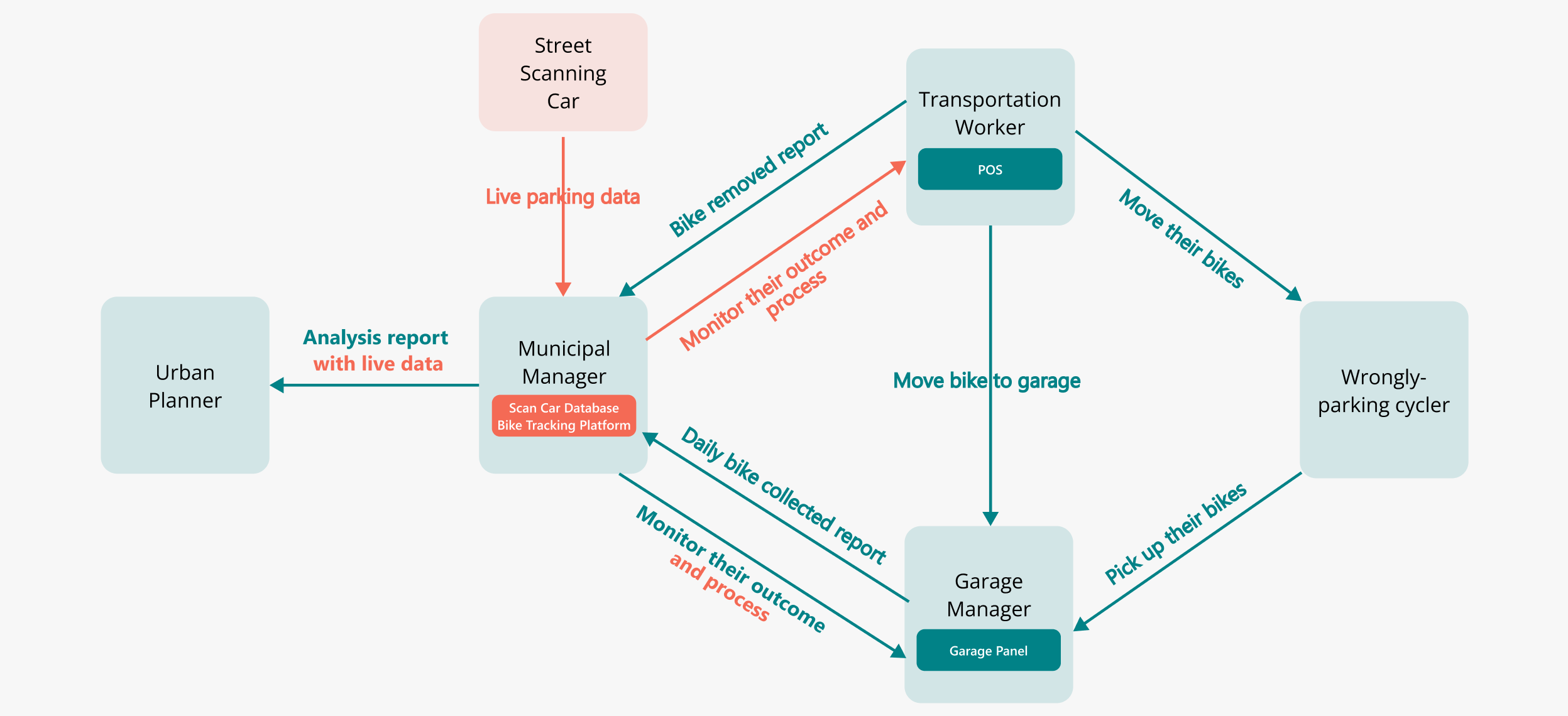
CURRENT PLATFORM
However, the current platform cannot meet the new needs.
INSIGHTS
Summarize our client's pain points
Unaligned Data Metrics
The lack of standardized metrics across car-scanning systems prevents accurate tracking and comparison, making it difficult to evaluate and improve bike rack performance.
Confusing Filter Logic
Disorganized and inconsistent filtering categories lead to data fragmentation, limiting collaboration and reducing the clarity of insights for both government and removal companies.
Unintuitive Data Visualization
Current visualizations fail to clearly convey patterns in location, quantity, and violation type, preventing users from quickly capturing the overall situation at a glance.
Unconfident of Bike Parking Distribution
The government cannot track clear data and trends to make bike rack iteration
Distrust for Bike Removal Company’s Progress
The extent of the government's engagement in the mutual enhancement of the bike removal company is limited.
Lack of efficiency in generating timely solutions
Underreporting is typical because of the randomization of fine lists, which involve different times, different inspectors, and variable cycling conditions.
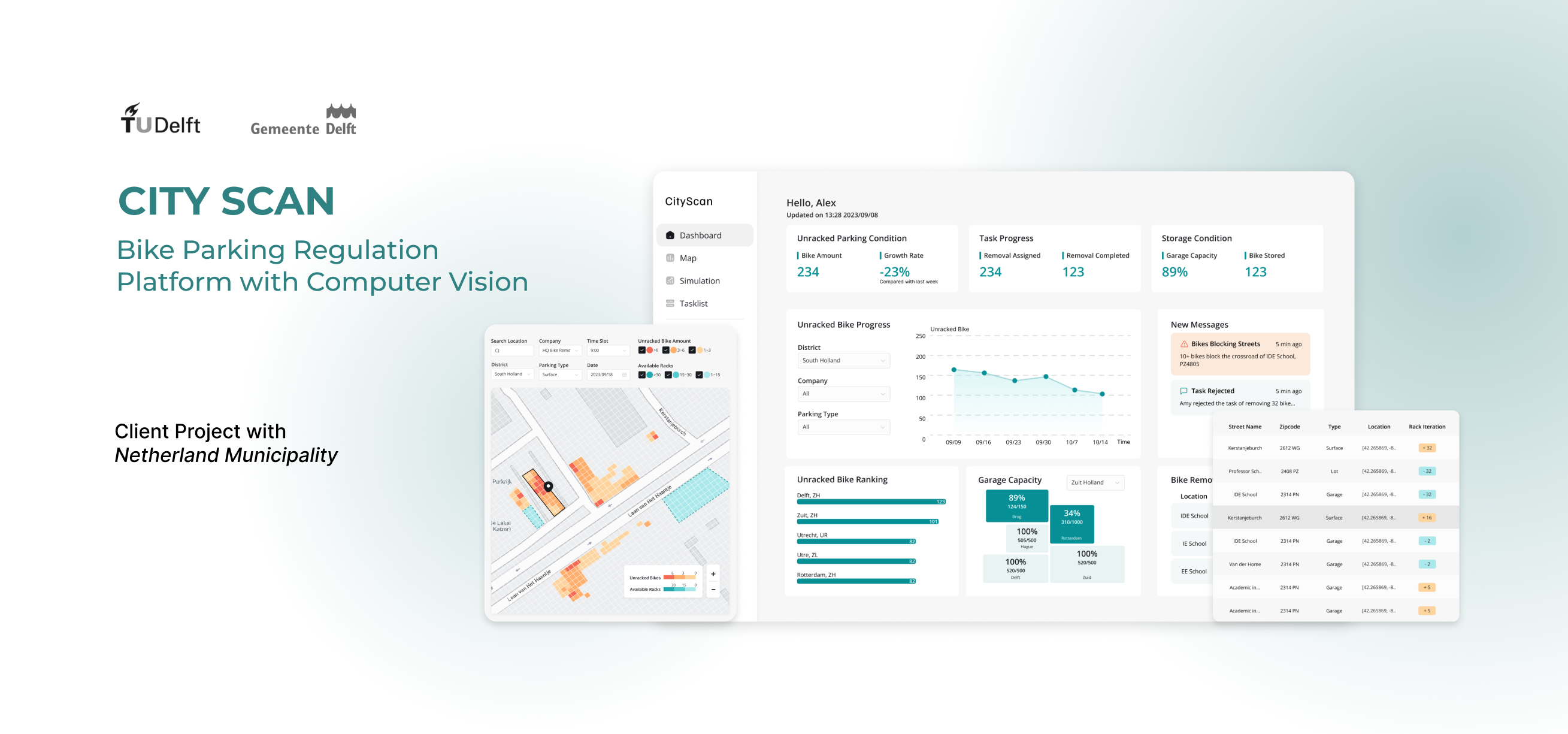
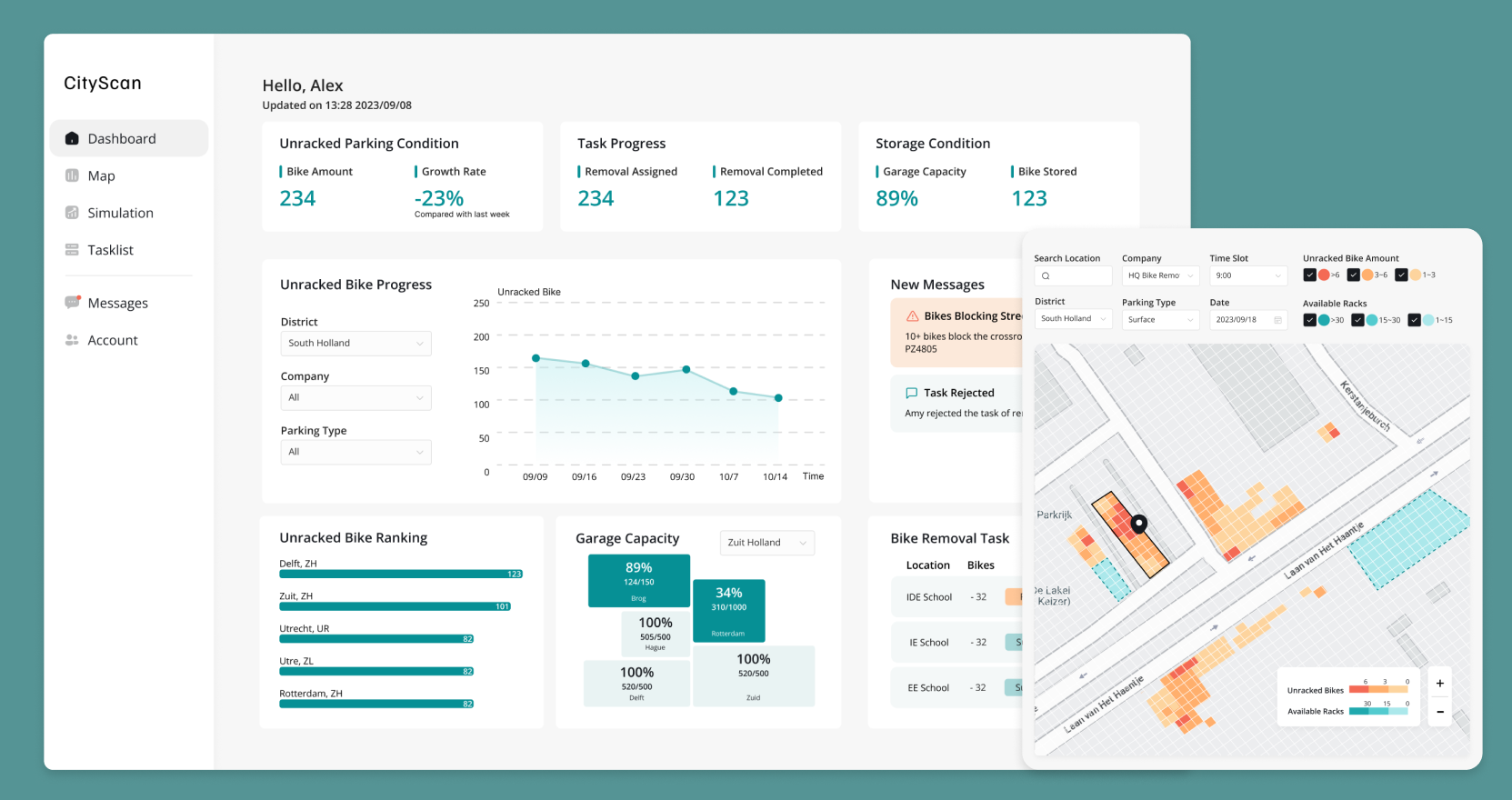
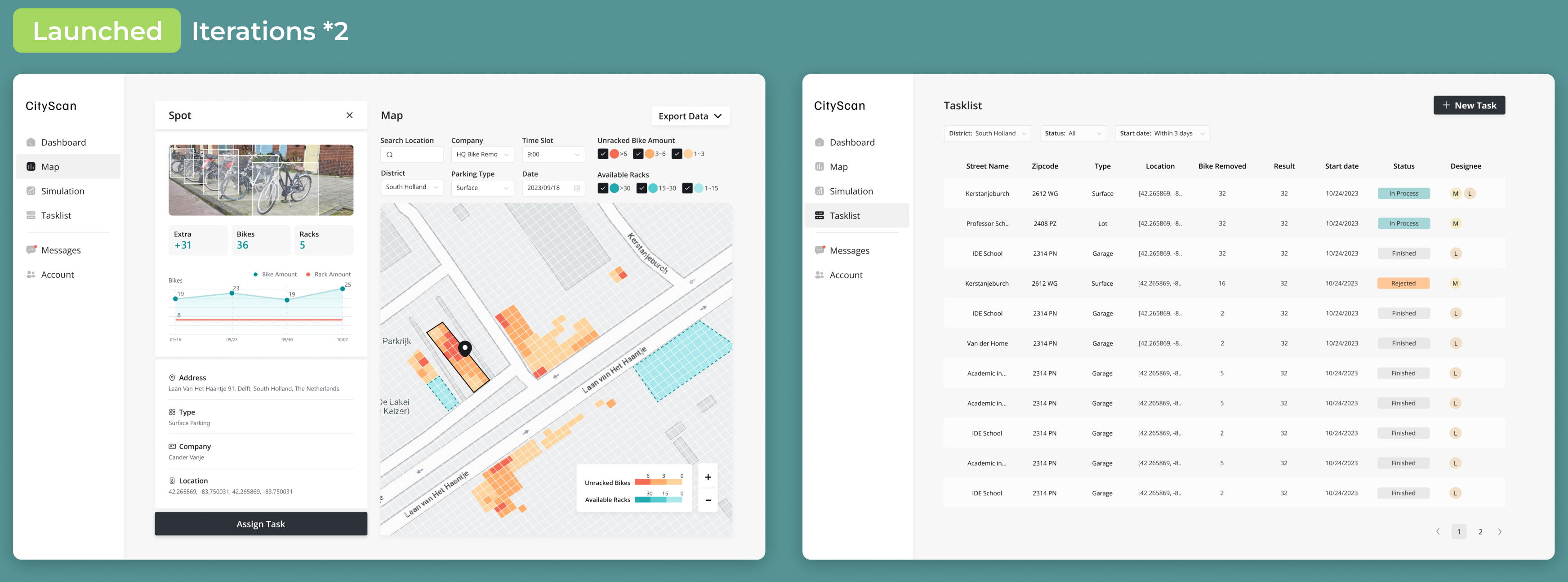
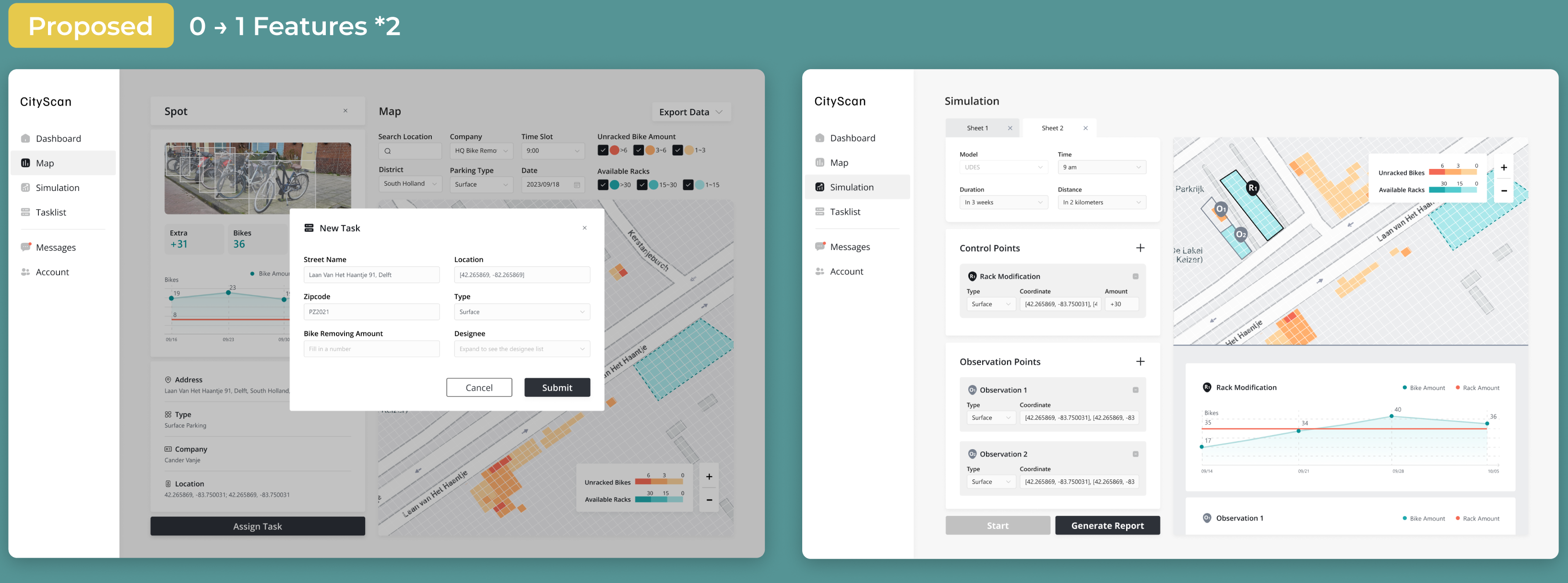



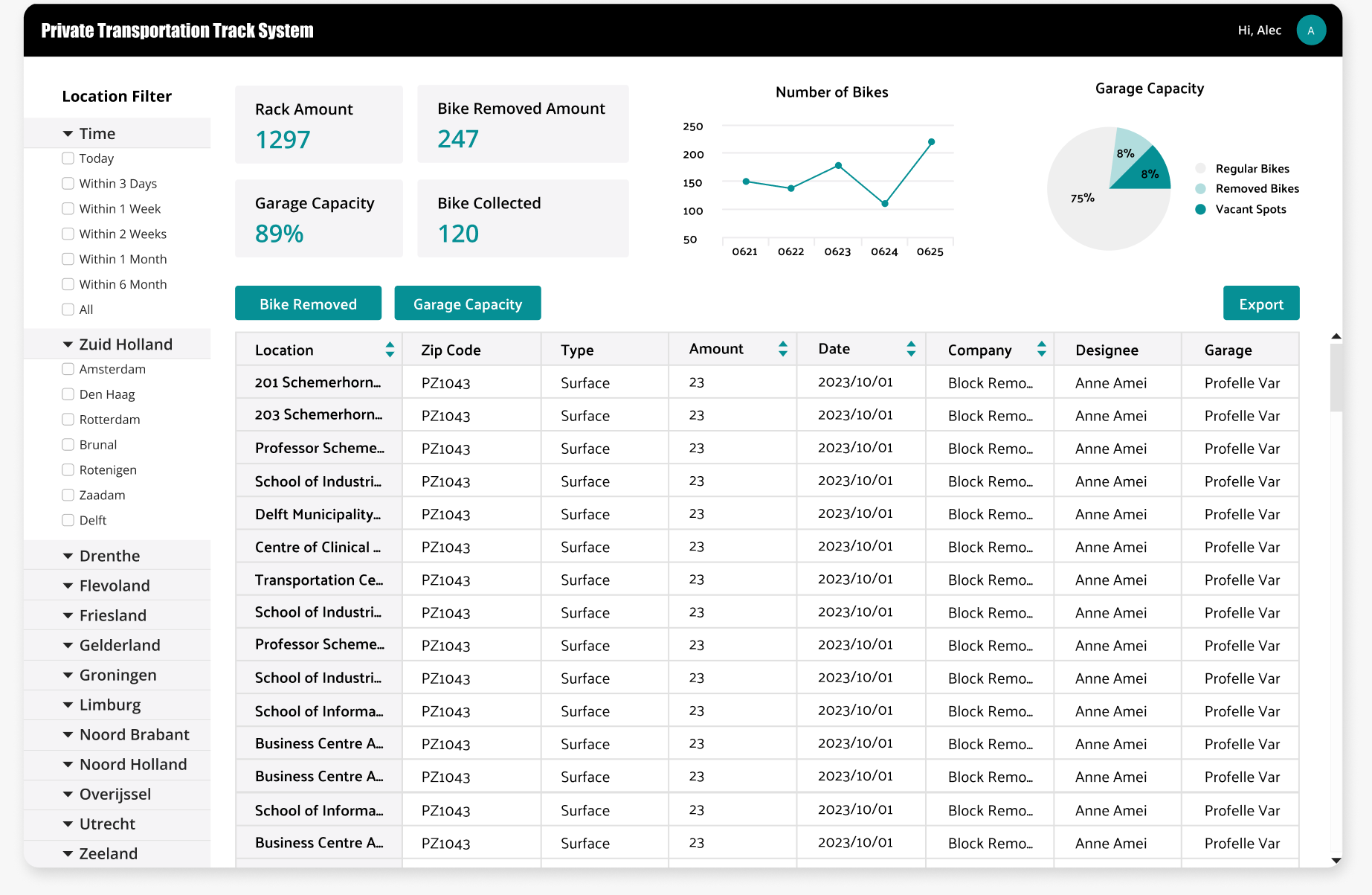





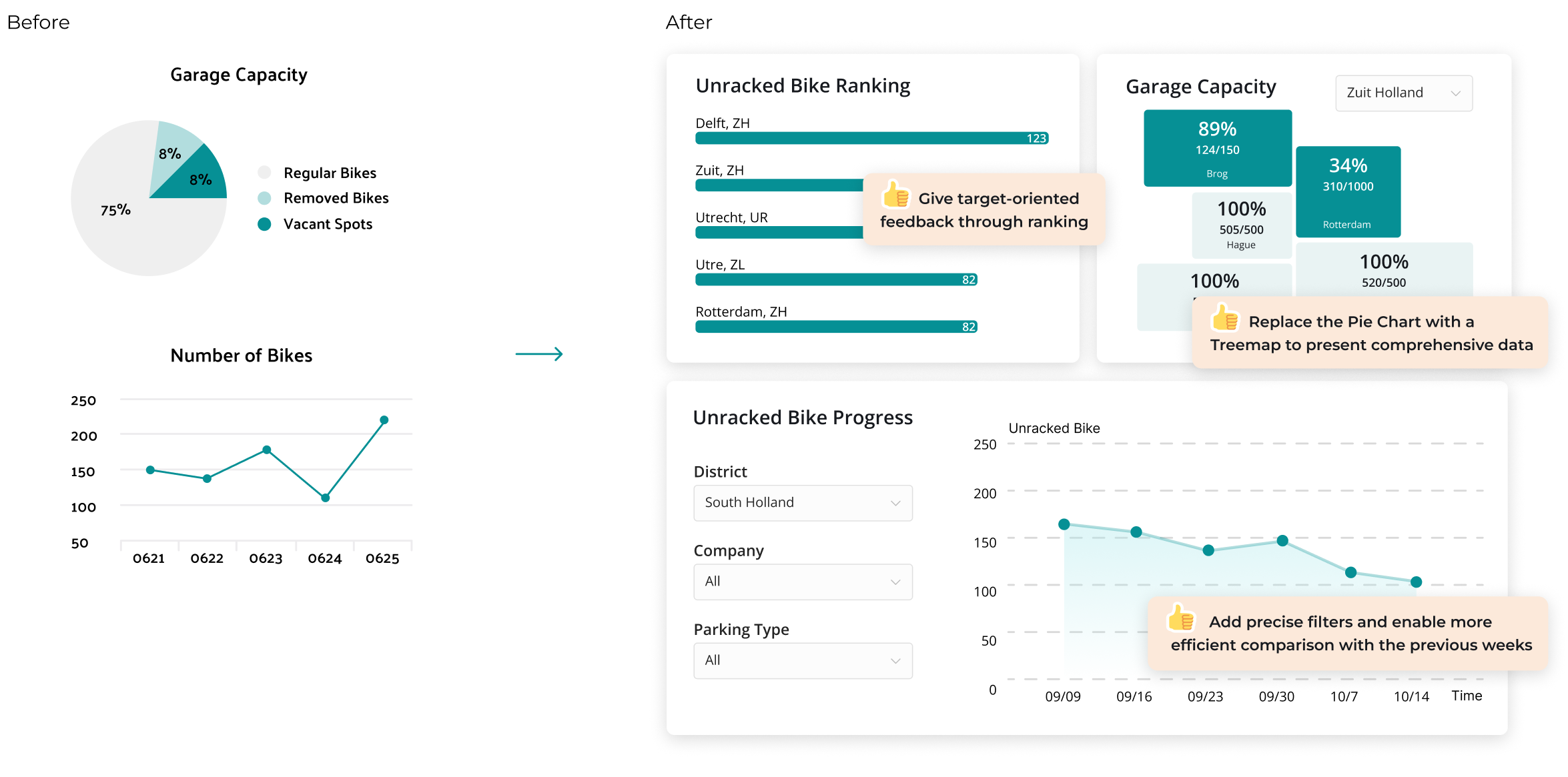
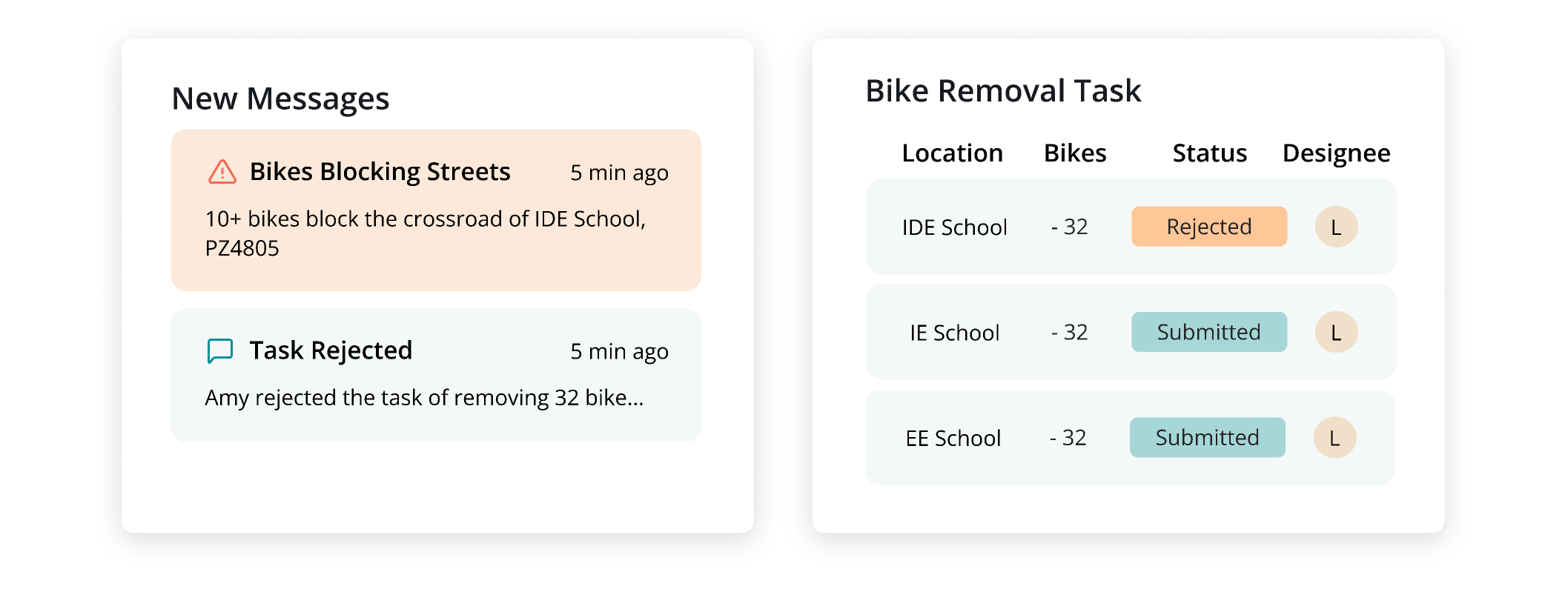
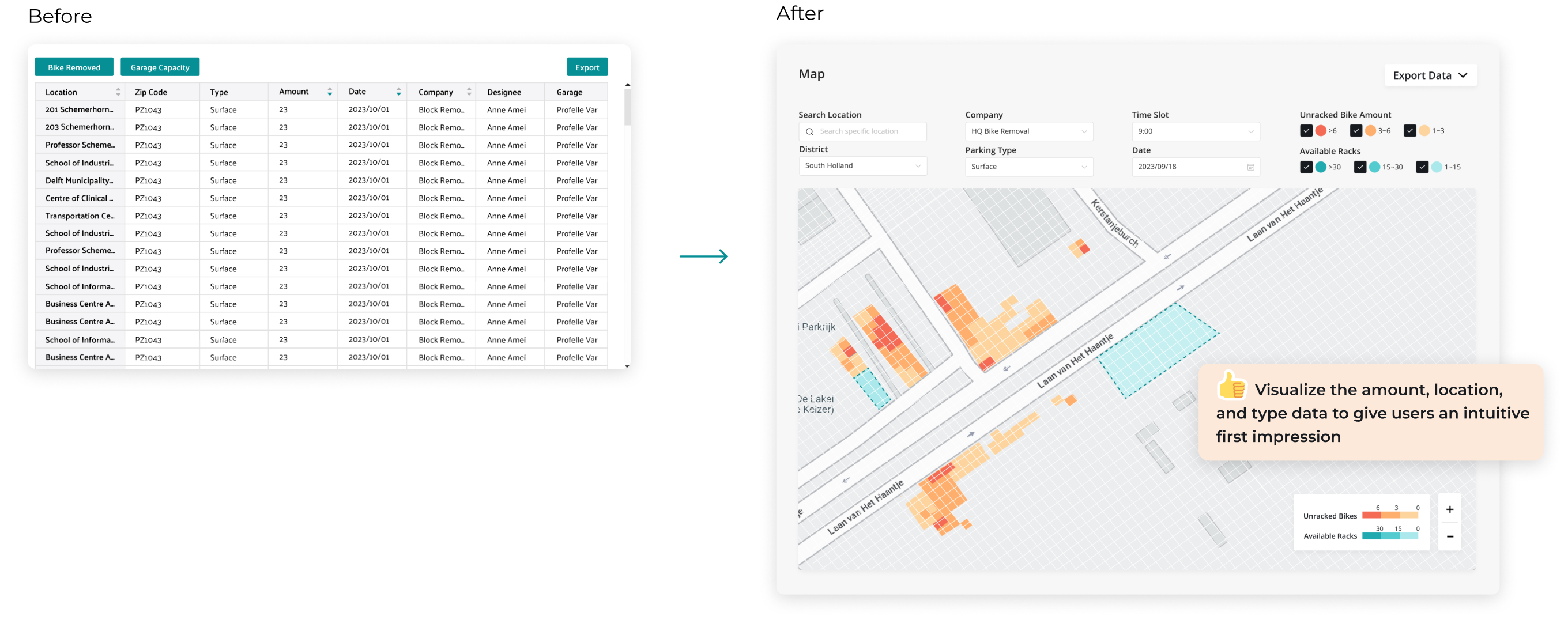
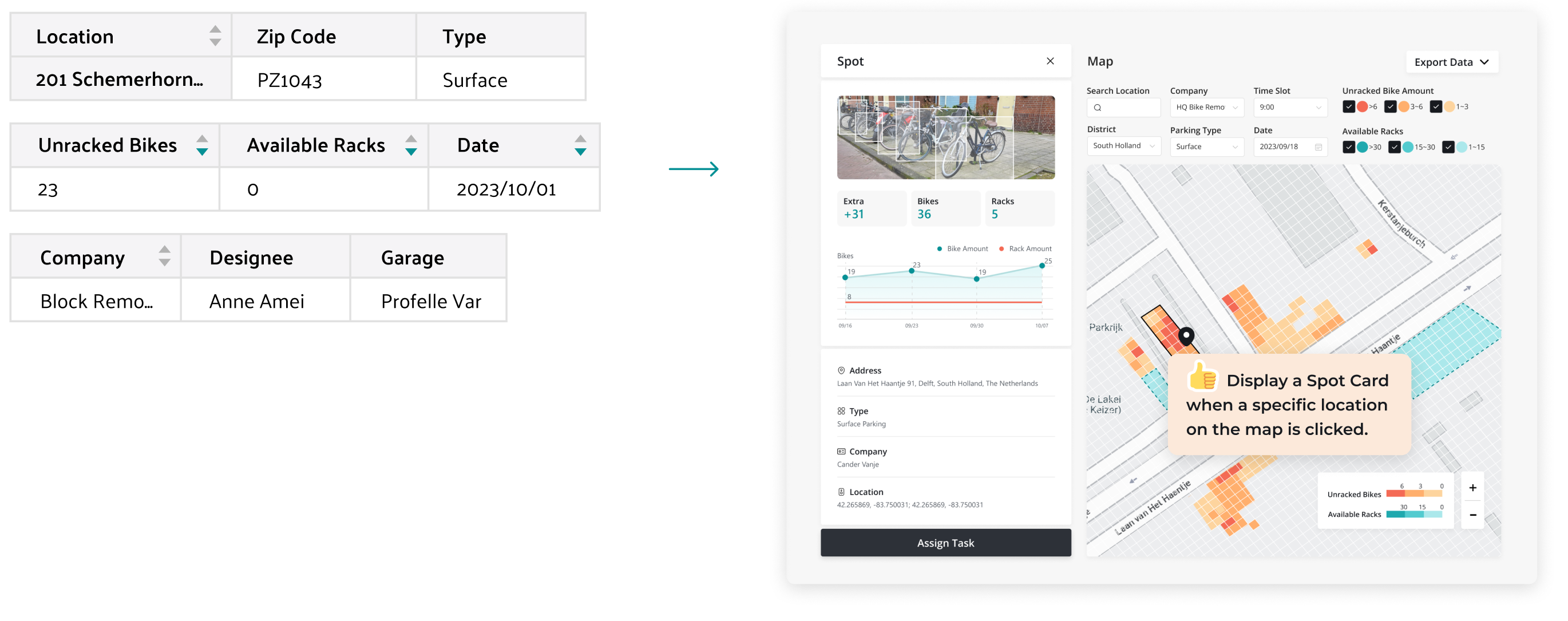
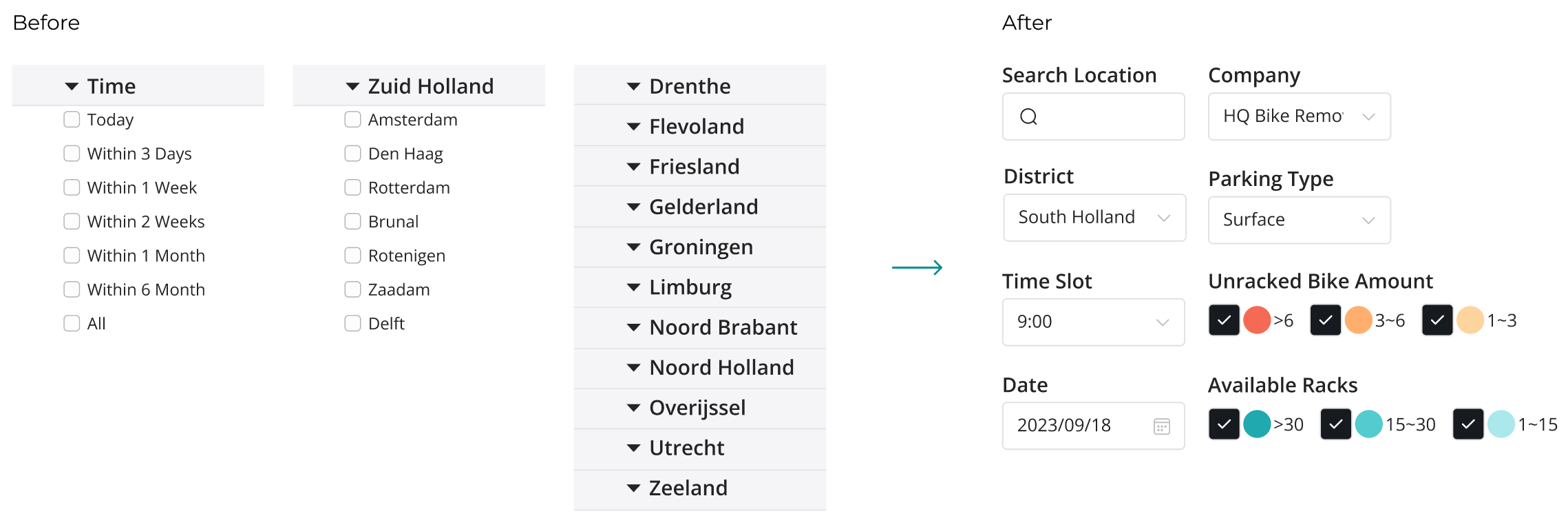
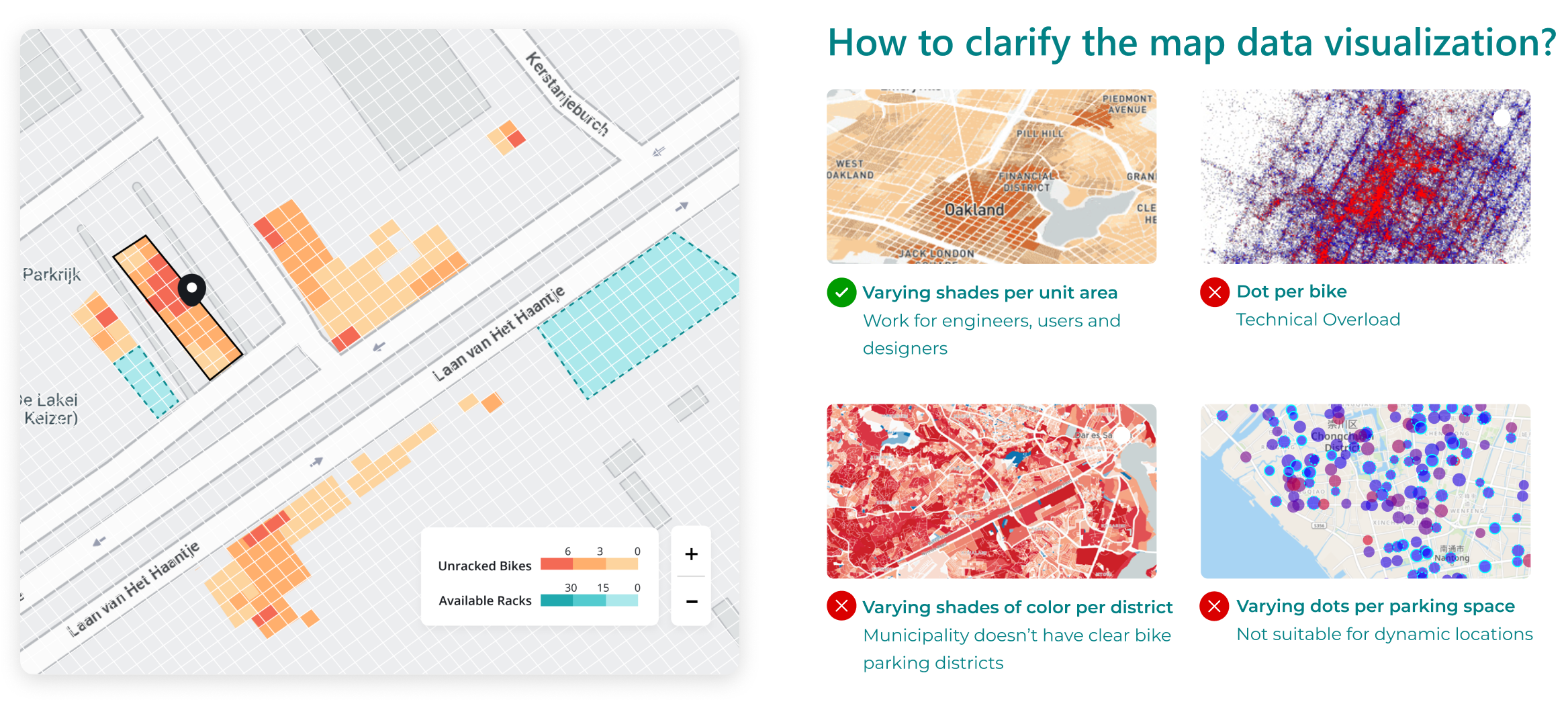
-1.png)

